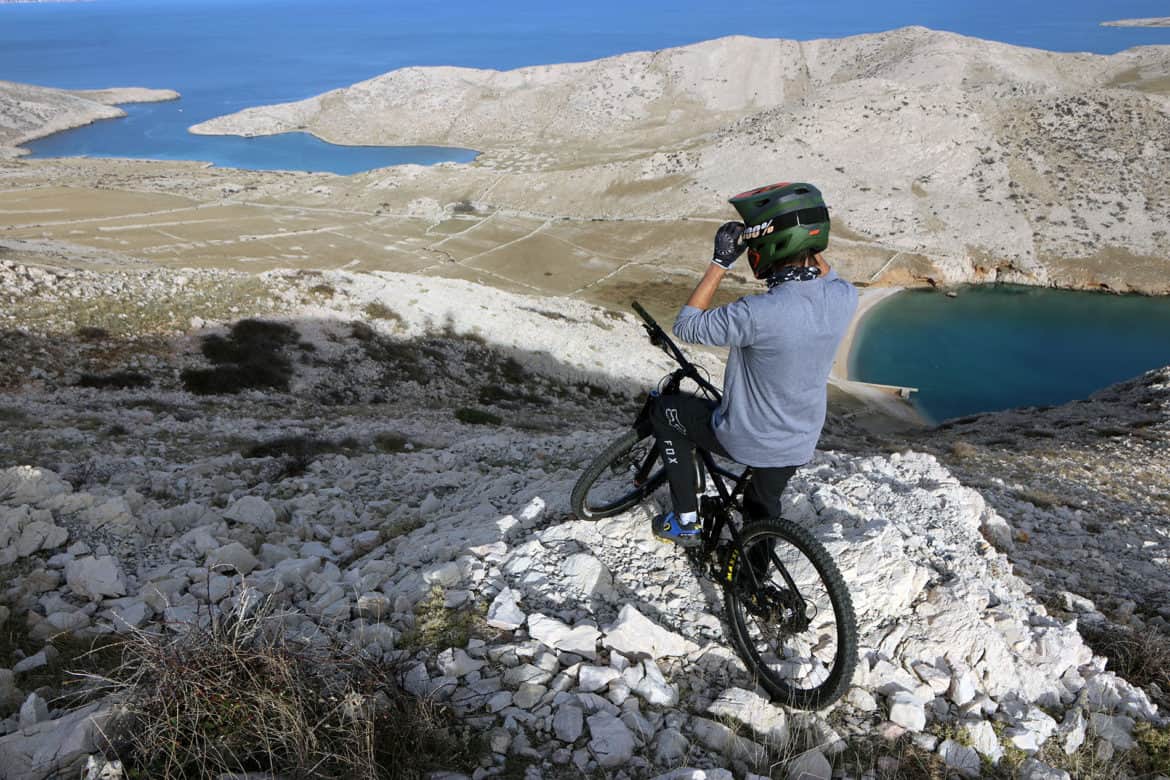Mountain biking is one of the best ways to enjoy the splendor of nature while getting some great exercise at the same time. It’s perfect for building muscle in the lower body and improving your cardiovascular fitness. It’s also a low-impact form of cardio, which means it doesn’t put as much strain on your joints and ligaments as other workouts.
For nature lovers, mountain biking is the ultimate gateway to exploring the outdoors. It allows you to cover great distances in a short time without the high energy requirements and high impact of trail running. However, mountain biking is still hard on the body and can lead to strain or injury if you don’t prepare adequately. This article is all about how to stretch properly before pedaling off.
1. Downward Facing Dog
Covering long distances on a mountain bike is taxing on your lower body and back muscles. This stretch, which you will recognize if you’ve ever taken a yoga class, is great for releasing tension in the back, opening the hips, and stretching your hamstrings.
Like all stretches, especially yoga poses, it’s important to get your form right. Without proper form, you may end up doing more harm than good.
Starting in a tabletop position (on all fours with your spine parallel to the ground), lift your knees off the ground and push your bottom into the air. Keep your fingers splayed and your back straight. The back of your neck should be in line with your arms, don’t look down to your navel or up in front of you.
Keep a gentle bend in your knees and push your heels down to the floor as far as you can without it becoming too uncomfortable. Engage your core to allow the tension along your spine to release and hold the position for five to ten deep breaths.
If you have very tight hamstrings, don’t be afraid to bend your knees a bit more or set your feet wider apart. Don’t try to overextend yourself, you should feel a stretch in the back of your legs, but no pain.
2. Quadricep Stretch
Your quads are heavily engaged while mountain biking, so it’s important to keep them limber and loose. There are a few variations of this stretch, but the simplest version is standing on one leg and supporting yourself against a wall with your opposite hand.
Face a wall, and gently lean against it with the hand opposite to the leg you want to stretch. Then, raise your calf behind you and take hold of your foot with your free hand.
Gently pull your calf towards your bottom, being careful not to arch the back while you do so. Try to use your core muscles to keep your tailbone tucked underneath your spine. This will allow for a deeper stretch in your quad.
3. Glute Stretch
The glutes are large muscles that play a huge role in power and endurance when mountain biking. This stretch will stop your glutes from tightening up and aching while you ride.
There are two variations of this stretch, one performed lying down, and one seated.
To get a deep stretch in your glute while lying down, bring one of your legs up so that it’s at a ninety-degree angle to your torso. Keep your knee bent. Then, bring your opposite leg up and rest the ankle just above the knee. Interlock your fingers around your raised knee and resting foot as if to pull them into your chest.
Then, gently begin to pull your knee towards you. You should feel a deep stretch in your glute and an opening in the hips.
If this doesn’t feel comfortable, you can also perform the stretch in a seated position. To do this, simply rest your ankle on your opposite knee, use your arms to keep it in place, and then bend forward slowly. Try to bend from the waist to get the deepest stretch possible.
4. Belly Twist
This stretch is good for your glutes and your lower back, both of which take a beating when going downhill. If you battle with lower back pain, it will bring you almost instantaneous relief.
Start by lying flat on your back with your arms straight out to your sides. Use your arms to stabilize yourself as you bring your knees up to a ninety-degree angle, then slowly let them fall to one side.
Keep your gaze in front of you and take five to ten deep breaths from this position. Breathing deeply while in a twist can feel difficult, so don’t strain too much.
Then, gently lift your knees back up to the start position and repeat the stretch on your opposite side. If you perform a stretch on one side of your body, always be sure to stretch the opposite side equally.
5. Butterfly Stretch
This stretch is designed to open your hips, allowing for more mobility and comfort while in the saddle. While sitting on the floor, bring the soles of your feet together so that your toes point out in front of you and your knees point out to your sides.
Take hold of the tops of your feet, rest your elbows on top of your legs, and gently bend forward from the waist. You should feel a deep stretch in your hips and inner thighs. Practicing this stretch daily will gradually open your hips and bring you greater flexibility.
As a mountain biker, taking care of your body is a top priority. Stiff muscles and tight joints can seriously hamper your performance and take the joy out of the experience.
Whether you’re using a mountain bike for commuting or you’re planning on tackling the toughest terrain, incorporating these stretches into your warmup routine will significantly improve your comfort and endurance.

